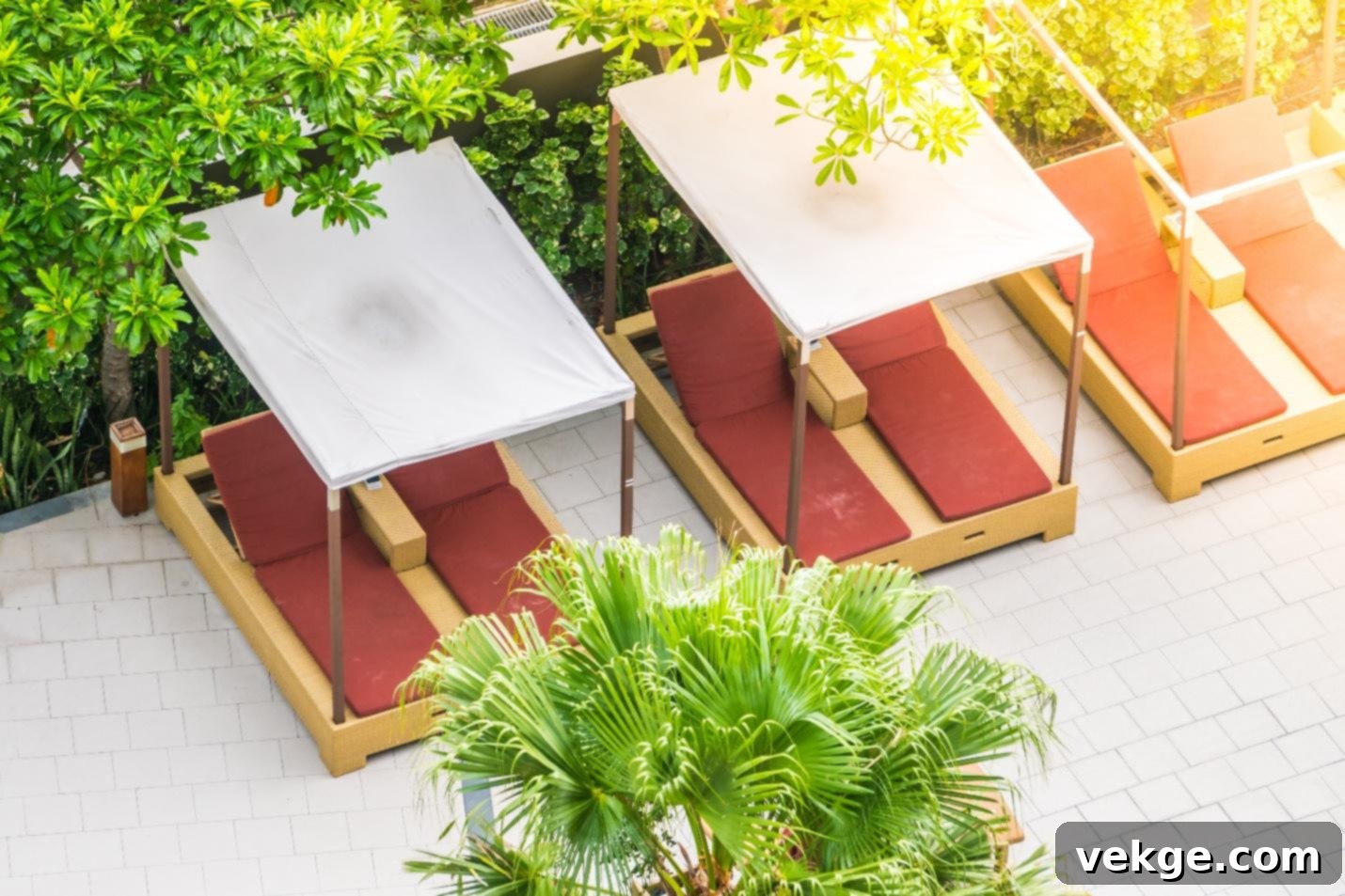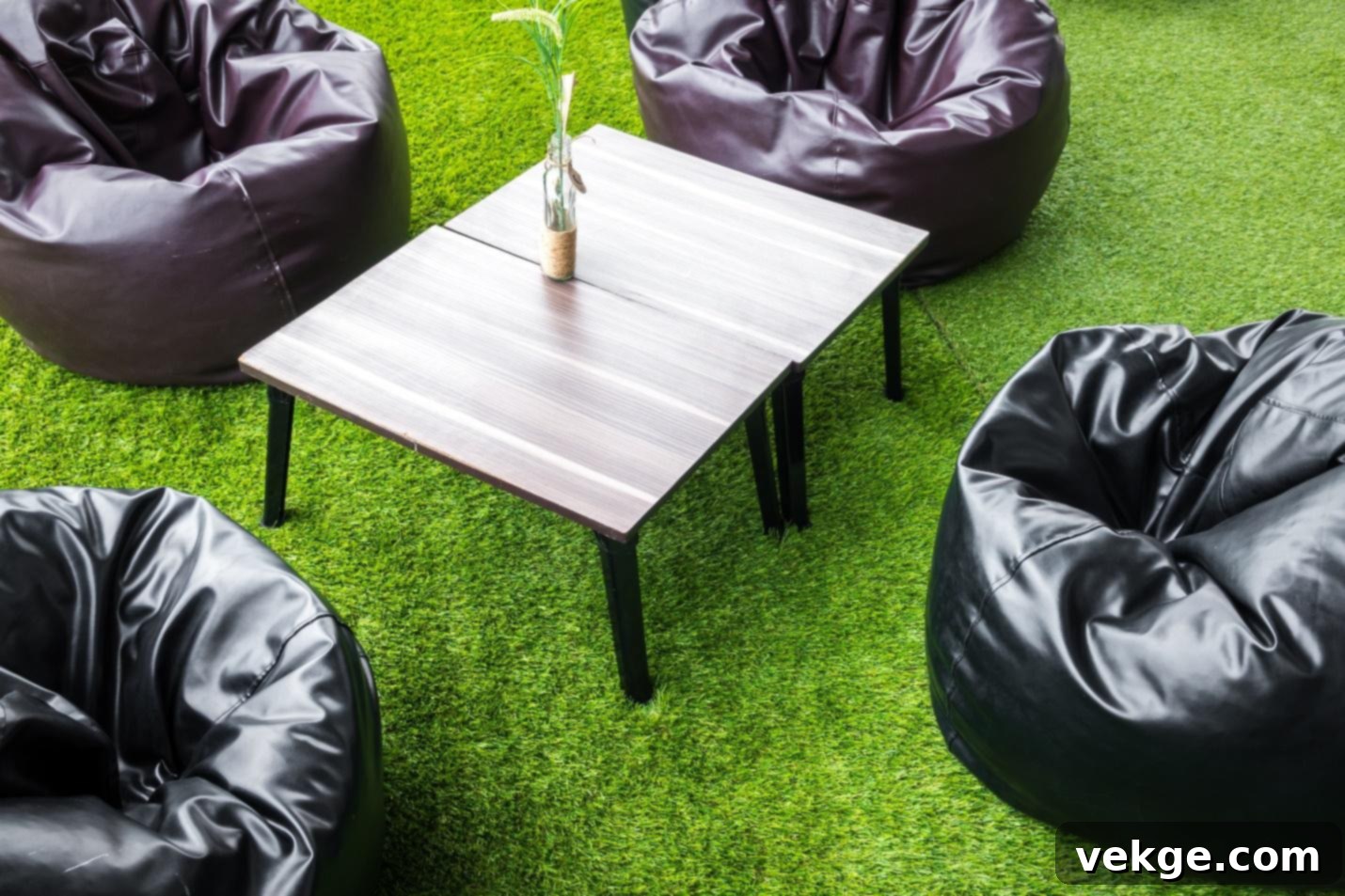Beyond Aesthetics: Understanding the Core Differences Between Commercial and Residential Outdoor Furniture
When you first encounter commercial and residential outdoor furniture, they might appear to share many similarities. Both categories feature attractive designs, offer comfortable seating options, and are crafted from materials intended to withstand the elements. However, beneath this surface-level resemblance lie fundamental differences that go far beyond mere aesthetics.
Commercial outdoor furniture is engineered and constructed with a distinct purpose: to endure much heavier use, more demanding environmental conditions, and adhere to significantly higher safety standards than furniture designed for home use. This isn’t just about looking good; it’s about delivering unwavering performance and dependable function day in and day out, often for hundreds of users.
From the inherent durability of the materials chosen to the meticulous way each piece is assembled, finished, and maintained, commercial-grade options are conceived with entirely different objectives in mind. Recognizing these critical distinctions is vital for business owners looking to make strategic, long-lasting investments, and it also helps homeowners appreciate the engineering and design principles that make certain products exceptionally well-suited for public and high-traffic settings.
Let’s delve deeper into what truly sets commercial outdoor furniture apart from its residential counterparts, exploring the seven key factors that define their unique characteristics and applications.
1. Built for Heavy, Frequent Use and Unmatched Durability
Perhaps the most significant difference between commercial and residential outdoor furniture lies in its intended usage and the resulting demand for durability. While residential furniture is typically designed for occasional use by a limited number of people – family members and a few guests – commercial-grade furniture must withstand the continuous assault of countless individuals, day after day, year after year.
Imagine the bustling patio of a popular restaurant, the vibrant pool deck of a hotel, or a busy public seating area in a park or shopping center. These environments can see hundreds, if not thousands, of visitors daily. To cope with this relentless level of traffic, commercial furniture is engineered with superior structural integrity. This means more solid frames, often constructed from thicker gauge metals, reinforced joints, and specialized fasteners that prevent loosening or failure over time. These components are designed to withstand repeated impacts, heavier loads, and constant movement without compromising their stability or appearance.
Residential furniture, while durable in its own right for home use, simply isn’t built to the same rigorous standards of continuous public exposure. The investment in commercial-grade pieces pays dividends for businesses by drastically reducing the frequency of replacements, minimizing repair costs, and ensuring a consistently professional and inviting environment for their patrons.
2. Industrial-Grade Materials for Superior Resilience
The choice of materials is paramount in defining the longevity and performance of outdoor furniture. Commercial outdoor furniture is typically fabricated from industrial-grade materials selected for their extreme resilience and resistance to wear and tear. Common framework materials include powder-coated aluminum, stainless steel, or galvanized steel. These metals are chosen not just for their inherent strength but also for their ability to resist corrosion, rust, and structural fatigue under constant stress.
Beyond metals, durable hardwoods like teak, known for its natural oils and dense grain that repel water and pests, are often utilized. Synthetic materials such as high-density polyethylene (HDPE) or commercial-grade synthetic wicker are also popular due to their exceptional UV resistance, colorfastness, and impermeability to moisture and mold. These materials are meticulously chosen to withstand intense UV exposure, relentless rain, fluctuating temperatures, and even harsh chemicals like chlorine or saltwater, depending on the environment.
In contrast, residential pieces might opt for lighter-weight materials or less robust finishes to achieve a specific aesthetic or a lower price point. While perfectly suitable for a backyard patio, these materials may lack the inherent strength and protective treatments necessary for commercial applications. For businesses, this deliberate material selection translates into superior longevity, reduced maintenance requirements, and significant cost-effectiveness over the furniture’s lifespan, as fewer replacements are needed.

3. Designed to Withstand Harsh and Diverse Environments
The performance expectations for commercial furniture in various outdoor settings are exceptionally high. It must perform consistently in extreme conditions without showing signs of degradation or losing its structural integrity. Manufacturers of commercial pieces place a significantly greater emphasis on comprehensive weather resistance compared to residential models.
This includes incorporating exceptional multi-layer finishes, advanced UV inhibitors embedded directly into materials, and robust corrosion-resistant coatings. These protective measures are crucial for preserving the furniture’s color, structural integrity, and overall appearance, even when exposed to the most punishing environments. For example, lounge chairs positioned around a resort pool must be impervious to water, chlorine, and constant sun exposure. Similarly, furniture at a seaside café requires specialized protection against salt corrosion, strong winds, and airborne sand.
While residential outdoor furniture is generally designed to be weather-resistant, it typically doesn’t face the same level of continuous, varied environmental stress. Homeowners often have the option to store their furniture during off-seasons, cover it during inclement weather, or relocate it to a more sheltered spot. Commercial settings rarely afford such flexibility, demanding furniture that can truly stand up to nature’s full spectrum, unassisted, day after day.
4. Prioritized Safety and Stability Standards
In public settings, safety is not just important; it’s absolutely critical. Commercial outdoor furniture must comply with stringent safety standards and regulations to minimize the risk of accidents and injuries. Businesses have a legal and ethical responsibility to provide a safe environment for their customers and employees, and poorly designed or unstable furniture can lead to significant liability issues. Safety in public settings is crucial, encompassing aspects such as stability, load-bearing capacity, and the absence of hazardous elements.
This focus on safety is integrated into the design and manufacturing process from the very beginning. Features like reinforced legs are standard to prevent tipping, even when subjected to uneven weight distribution or unexpected forces. Rounded edges are incorporated to reduce the risk of scrapes or serious injuries, and non-slip feet or glides ensure stability on various surfaces, preventing sliding or unexpected movement. Furthermore, commercial furniture often undergoes rigorous weight capacity testing and anti-toppling simulations to meet specific industry and governmental safety guidelines, such as those related to ADA compliance for accessibility.
Residential furniture, conversely, is intended for home use where the user base is more controlled, and the risks and potential liabilities are significantly lower. While safety remains a consideration in residential design, it is typically not subjected to the same strict regulatory oversight or extensive testing as commercial-grade products.

5. Modular and Space-Efficient Designs for Versatility
Many commercial spaces are dynamic, needing to serve multiple purposes and adapt their layouts for various events, seasonal changes, or to accommodate different numbers of people throughout the day. This inherent need for flexibility is why commercial outdoor furniture is frequently designed with modularity, stackability, or foldability in mind. These features are not merely conveniences; they are strategic necessities for efficient operation.
Stackable chairs allow for hassle-free storage, optimizing valuable floor space when not in use or for ease of cleaning. Nesting tables can be quickly rearranged to create larger dining surfaces or stored compactly. Sectional seating that can be reconfigured to suit different group sizes or event requirements is standard in hospitality and corporate settings. This design philosophy enables business owners to maximize the utility of their outdoor areas, effortlessly transforming a casual lounge into a formal dining space or an event reception area.
Such flexibility is a cornerstone of commercial design. Residential outdoor furniture, on the other hand, is usually purchased for a more permanent arrangement within a specific, personal space. While some residential pieces offer versatility, they rarely demand or feature the same advanced level of modularity and space-saving attributes that are crucial for commercial applications.
6. Engineered for Lower Maintenance Over Time
For businesses, time is money, and operational efficiency is key. Commercial furniture is explicitly built to be easier and quicker to maintain than typical residential pieces, directly contributing to operational cost savings and seamless service.
In a commercial environment, furniture often needs to be cleaned rapidly and thoroughly between different groups of visitors. To facilitate this, the exterior of most commercial designs features smooth, non-porous surfaces that are remarkably easy to wipe clean. Materials are chosen not only for their durability but also for their ability to maintain a pristine appearance with minimal effort. This includes resistance to common stains from food and beverages, as well as resistance to mold, mildew, and fading.
For example, cushion fabrics are often quick-drying, UV-resistant, and treated with antimicrobial properties. Unlike residential furniture, which might require more delicate care, seasonal upkeep, or can simply be left to weather naturally, commercial pieces are designed for a high-turnover, low-fuss cleaning regimen. This significantly reduces labor costs for businesses and ensures that the furniture always looks inviting and hygienic for the next set of guests, enhancing the overall customer experience.
7. Extended Warranty and Higher Quality Control Standards
The commitment of manufacturers to their products is often reflected in their warranty offerings. Warranties on commercial furniture are substantially more extensive and comprehensive than those typically offered for residential products. This reflects the manufacturer’s confidence in the product’s ability to withstand tougher conditions and heavier usage. They understand that these pieces represent a significant investment for businesses and stand behind them with extended coverage for structural integrity, finish durability, and component performance.
Furthermore, the production process for commercial furniture involves significantly higher quality control standards. Parts and finished products are often subjected to additional rigorous testing and inspection to ensure compliance with demanding industry safety and performance benchmarks. This can include stress tests, load-bearing tests, accelerated weathering tests, and impact resistance assessments, all designed to simulate years of heavy use in a short period. Certifications from independent bodies further validate their adherence to strict standards.
In contrast, residential warranties tend to be shorter and might cover fewer aspects of wear and tear. This is primarily because the expected usage is less harsh, and manufacturing standards are scaled more for occasional home use rather than the relentless demands of daily public interaction. For commercial buyers, an extended warranty and robust quality control provide peace of mind and protection for their long-term investment.

Conclusion
The distinctions between commercial and residential outdoor furniture are far more profound than simply their surface appearance or price tag. Commercial pieces are not merely larger or more expensive versions of residential items; they are purpose-built and meticulously engineered for exceptional resilience, unwavering safety, and critical adaptability in high-traffic, high-demand environments. Every single detail, from the deliberate selection of industrial-grade materials to the rigorous engineering standards and advanced protective finishes, is focused on ensuring maximum longevity, unwavering comfort, and optimal operational efficiency.
While residential furniture undoubtedly offers beauty, comfort, and functionality perfectly suited for personal home use, it simply does not need to meet the same demanding criteria required for public and commercial applications. For businesses, investing in commercial-grade outdoor furniture is more than just an aesthetic choice; it’s a strategic decision that directly impacts customer satisfaction, ensures safety and compliance, reduces long-term operational costs, and ultimately enhances their brand image. Understanding these core differences empowers both business owners and homeowners to make informed choices that perfectly align with their specific needs and environments, guaranteeing satisfaction and performance for years to come.
